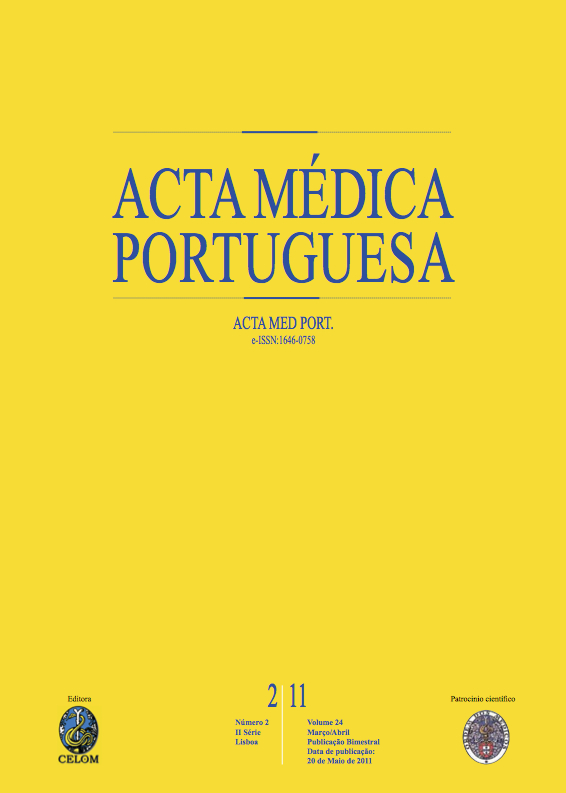Verrugas anogenitais na criança: a importância da abordagem multidisciplinar.
DOI:
https://doi.org/10.20344/amp.1608Resumo
Anogenital warts are caused by human papillomavirus (HPV) infection. Its presence in children raises concern of a possible sexual abuse. A multidisciplinary team approach is essential to clarify the mode of infection's transmission.Female child, three years of age referred to pediatrician for perianal warts. A history of similar lesions in another location in the child, parents or cohabiting was denied and possible sexual abuse refused. Gynecologic assessment of mother and daughter lead to identification of HPV type 6 at the child's lesions and negative studies results in the mother. Evaluation of the child in psychology showed no signs of possible abuse and social assessment concluded there was no context of risk. After two cycles of topical treatment with imiquimod 5%, complete regression of lesions was achieved, with no recurrence to date.No evidence of sexual abuse emerged from the set of clinical evaluations performed. The strategy of an extended follow-up is mandatory, and comes from the required prudence in this context, in order to ensure timely identification of risk situations which might have been previously unnoticed.Authors emphasize the dichotomy between a simple clinical diagnosis and the complex multidisciplinary approach which is crucial to elucidate a situation with potential socio-medico-legal implications.Downloads
Downloads
Como Citar
Edição
Secção
Licença
Todos os artigos publicados na AMP são de acesso aberto e cumprem os requisitos das agências de financiamento ou instituições académicas. Relativamente à utilização por terceiros a AMP rege-se pelos termos da licença Creative Commons ‘Atribuição – Uso Não-Comercial – (CC-BY-NC)’.
É da responsabilidade do autor obter permissão para reproduzir figuras, tabelas, etc., de outras publicações. Após a aceitação de um artigo, os autores serão convidados a preencher uma “Declaração de Responsabilidade Autoral e Partilha de Direitos de Autor “(http://www.actamedicaportuguesa.com/info/AMP-NormasPublicacao.pdf) e a “Declaração de Potenciais Conflitos de Interesse” (http://www.icmje.org/conflicts-of-interest) do ICMJE. Será enviado um e-mail ao autor correspondente, confirmando a receção do manuscrito.
Após a publicação, os autores ficam autorizados a disponibilizar os seus artigos em repositórios das suas instituições de origem, desde que mencionem sempre onde foram publicados e de acordo com a licença Creative Commons









